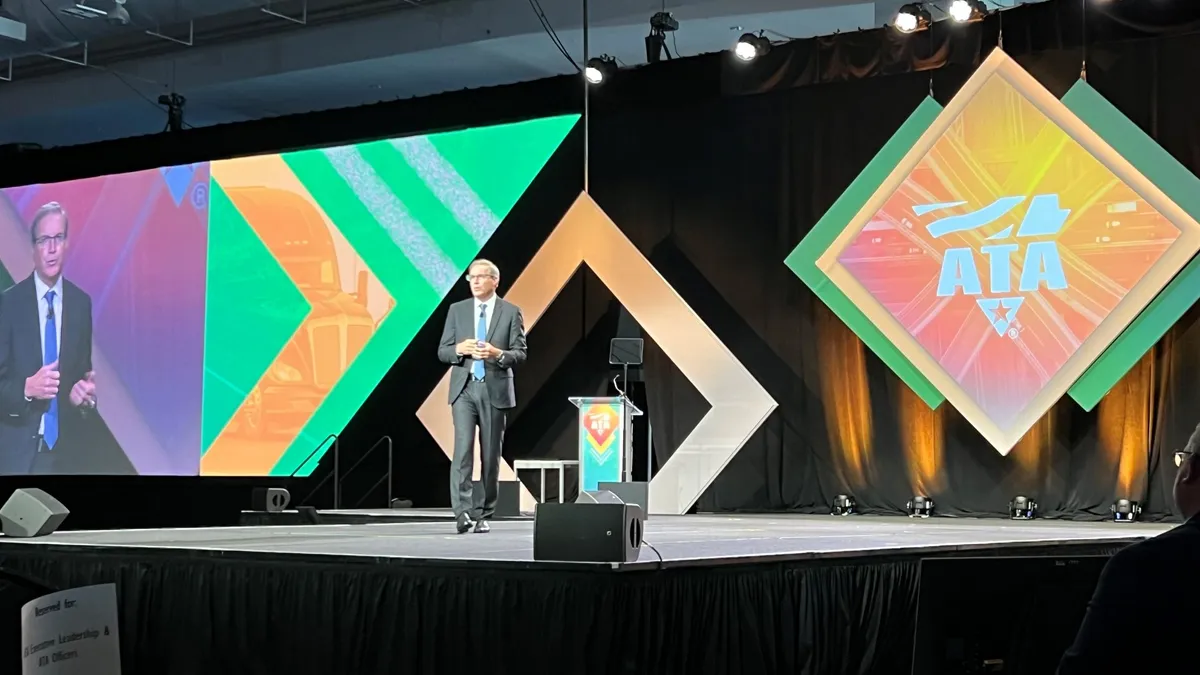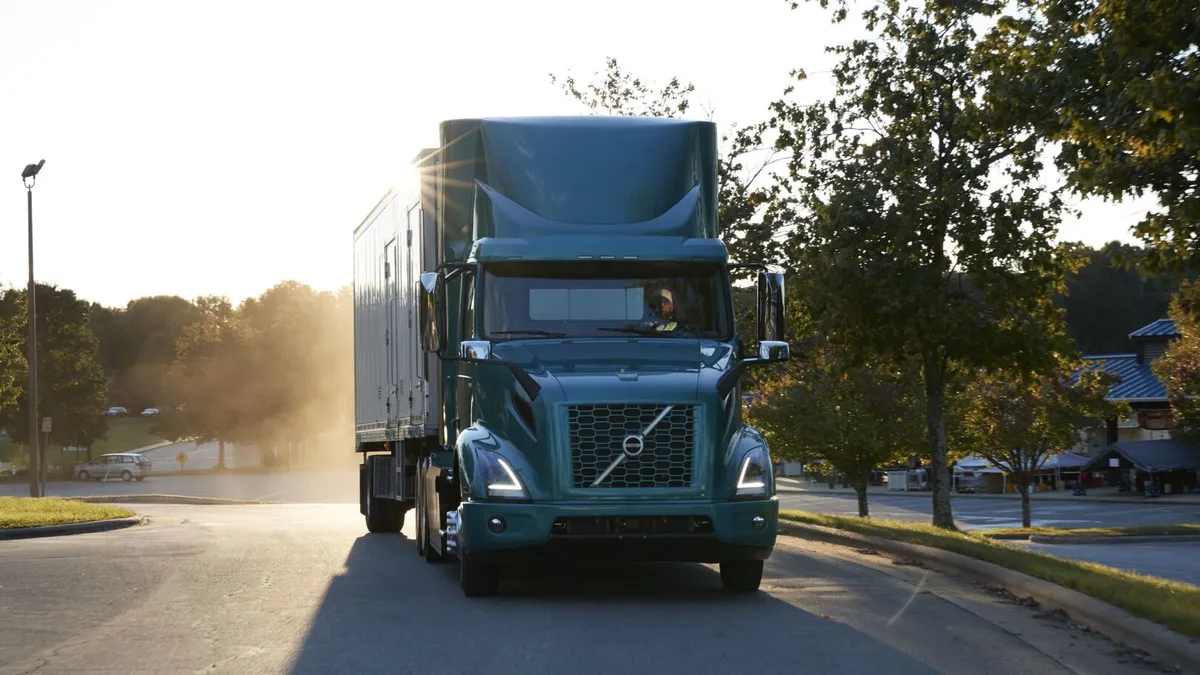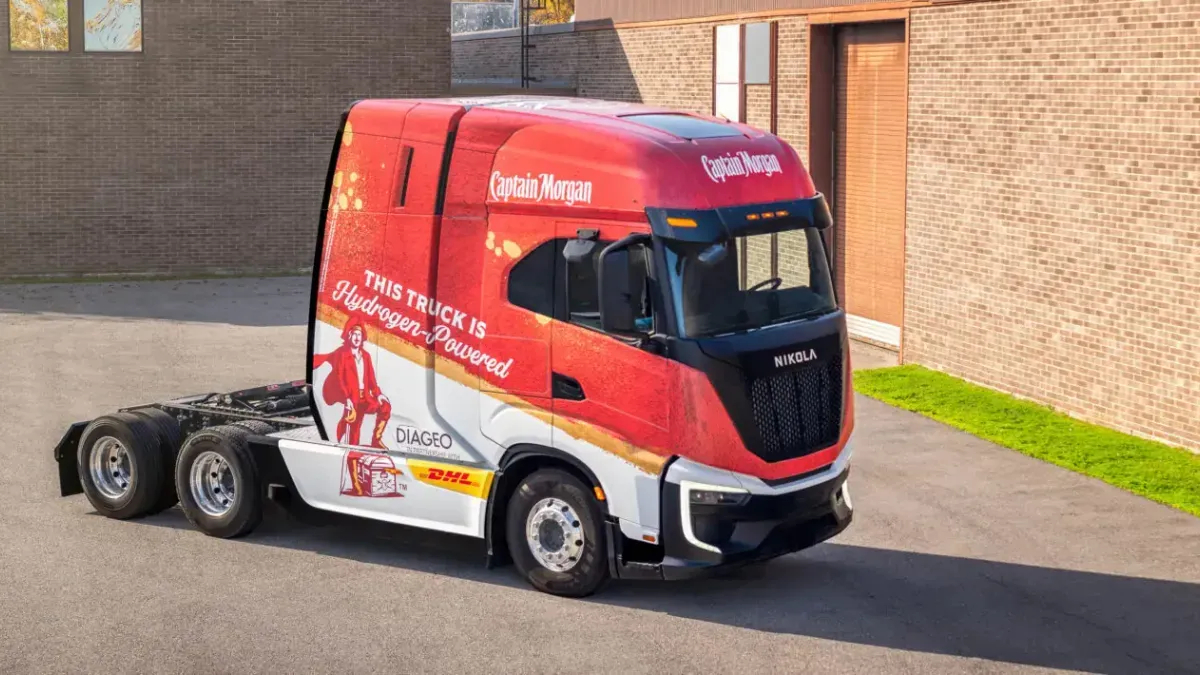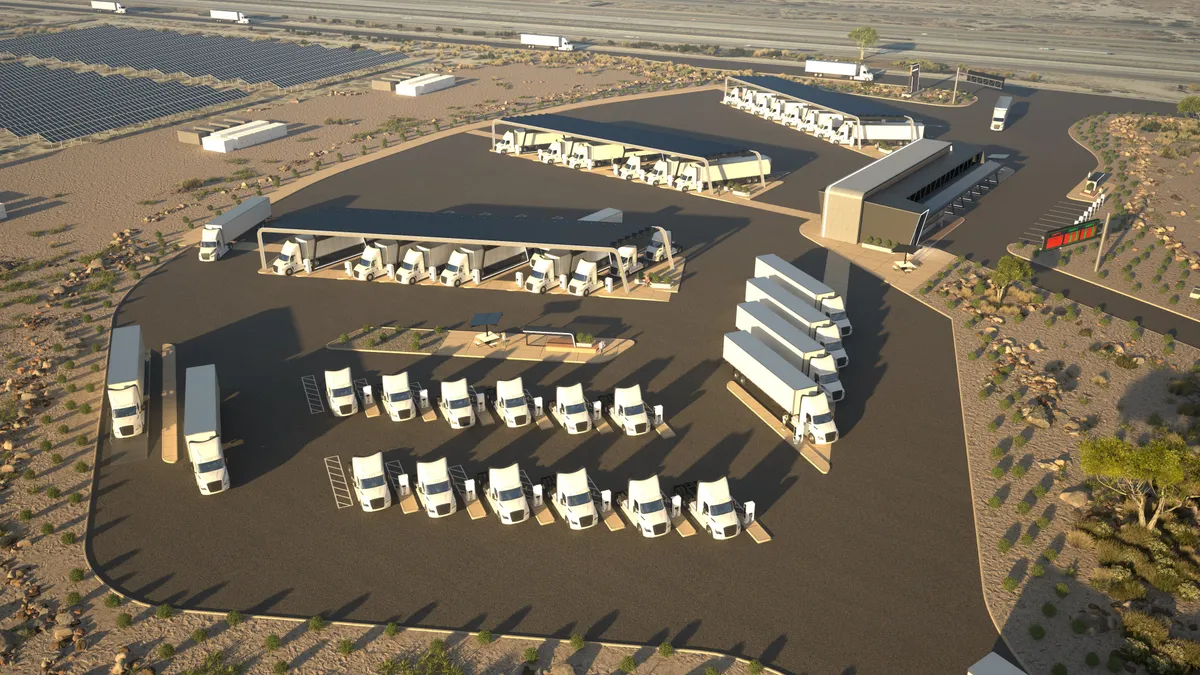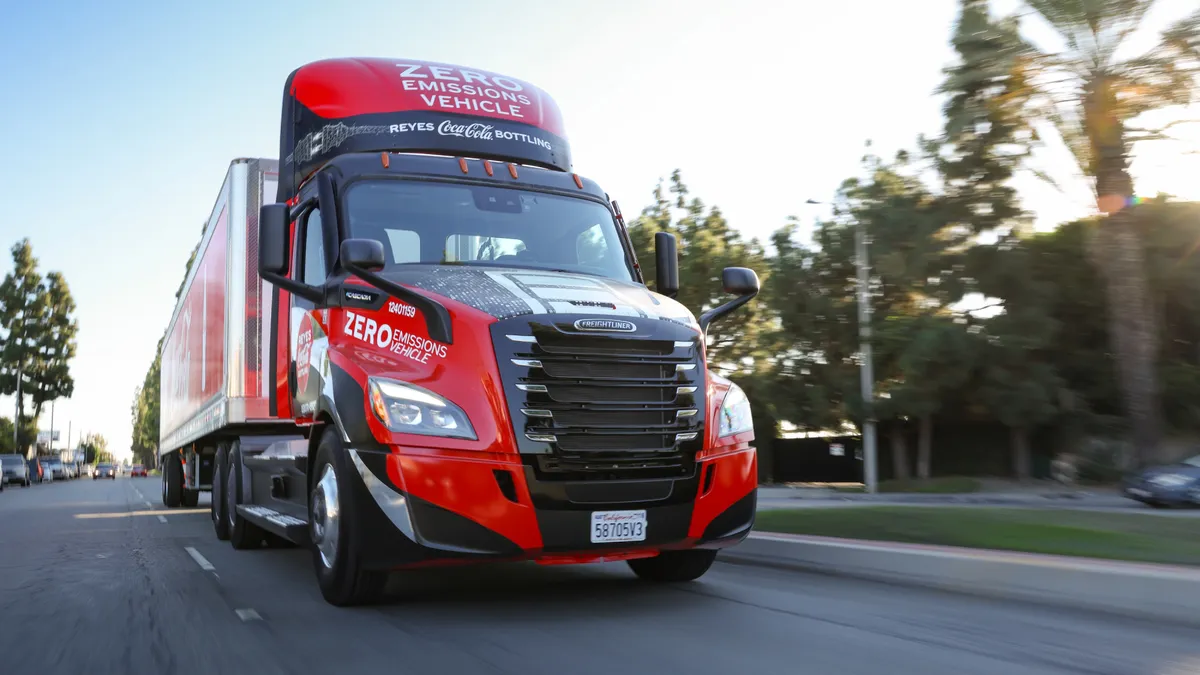Walmart plans to add a pillar to its Project Gigaton, an effort to reduce supplier emissions, that is focused specifically on transportation partners, Zach Freeze, the retailer's senior director for sustainability, said last week.
With Project Gigaton, Walmart aims to cumulatively avoid 1 billion metric tons of greenhouse gases in scope 3 emissions by 2030. In its Environmental, Social and Governance report, released last week, Walmart reported having avoided 186 million metric tons of emissions through the program in fiscal 2021. Since the project's launch in 2017, Walmart has avoided a cumulative 416 million metric tons of emissions, a spokesperson said.
The new transportation pillar will involve "working with our suppliers to ... make commitments on what they're doing for transport and reporting that progress through Project Gigaton," Freeze said.
He noted that the pillar will include a focus on product suppliers that have their own fleet, "like a Pepsi." But it will also include Walmart's carrier partners.
Reducing scope 3 transportation emissions "can be done through more efficient routing, it can be done through a more efficient fleet, so any sort of improved engine efficiency," he said. "And then, of course, the initial transition to zero-emission vehicles."
The new transportation pillar will likely focus mostly on ground transportation in its first year, but Freeze said other freight modes could be added down the line.
Walmart will add transportation to Project Gigaton in September, but the retailer did not say what drove the timing of adding transportation. "Transportation has long been a sustainability priority at Walmart," a spokesperson said.
Disclosing scope 3
Scope 3 emissions dwarf scope 1 and 2 emissions from Walmart's operations. Walmart points this out in its ESG report, providing a figure from the CDP and noting that supply chain emissions are on average 11.4 times greater than direct carbon emissions.
While Walmart provides figures for its scope 1 and 2 emissions in its report released last week, it doesn't provide a figure for its scope 3 emissions. But it does provide these figures in its climate disclosures to the CDP.
Walmart's Scope 3 estimate remained the same over last two CDP reports
Walmart said it doesn't report a figure for its scope 3 estimates in its ESG report because of the fact that it's an estimate.
The Sustainability Accounting Standards Board and Task Force on Climate-Related Financial Disclosures frameworks used for Walmart's ESG report also place less weight on scope 3 emissions, Simon Fischweicher, head of corporations and supply chains for CDP North America, said last week.
But CDP emphasizes scope 3 as a critical part of emissions reporting.
"We go beyond that and don't say, 'if appropriate scope 3,' but really make scope 3 a part of our request for companies across all sectors," Fischweicher said.
Getting a handle on the scopes
| Scope 1 | Direct emissions, including owned vehicles and owned or controlled facilities and grounds. |
|---|---|
| Scope 2 | Emissions stemming from purchased power, including electricity, heating and cooling, steam, or any other power source. |
| Scope 3 | Indirect emissions not included in scope 2, including all procurement, direct and indirect, along with travel, waste and water. |
Walmart has gotten an A- or higher for its climate disclosures to the CDP over its last three reports to the nonprofit. Receiving an A grade from CDP requires "robust disclosure across ... our full set of standardized metrics that we collect, including those scope 1, 2 and 3 emissions," Fischweicher said, adding that it also requires that a company demonstrates "aggressive action to drive toward that low carbon economy."
Fischweicher said scope 3 numbers are not exact figures, but "representative numbers that should give you a sense of scale of impact from certain categories."
But he said companies are increasingly able to get emissions data directly from their key suppliers. Walmart's ESG report said more than 1,500 suppliers report as part of Project Gigaton, and the suppliers represent 60% of the company's net sales in the U.S.
"CDP, through our supply chain program, has found that [getting data from suppliers] can lead to a much higher degree of accuracy from your supply chain emissions, and you're actually using some degree of primary information from your suppliers and then using that to model out the remaining figures," Fischweicher said.
Suppliers on board
Freeze said Walmart was one of the founding organizations of the CDP supply chain program and that it does get some data on its suppliers through the organization.
"But it's still not the entirety of our scope 3," he said. "We know there are still suppliers that haven't engaged and haven't reported."
The retailer's efforts around Project Gigaton are meant to help engage more of those suppliers that aren't reporting through the CDP. Increased energy efficiency is the main way Walmart's suppliers report being able to avoid or reduce emissions through the project, but the suppliers also see reductions through product use and design, and waste reduction, Freeze said.
"We know there are still suppliers that haven't engaged and haven't reported."

Zach Freeze
Senior Director for Sustainability at Walmart
Walmart's Project Gigaton might be larger than other scope 3 reduction efforts, but many more companies are beginning to show interest in reporting and reducing supply chain emissions, Fischweicher said.
"There has been a significant increase in the number of companies reporting on scope 3 emissions, and even setting targets around it," he said.
With increased interest in scope 3 emissions, and one of the largest retailers in the country beginning to focus specifically on transportation emissions, carriers are also announcing an increasing number of sustainable options.
Knight-Swift is adding battery-electric and hydrogen vehicles to its fleet, with a goal to reduce carbon emissions by half by 2035. Schneider is doubling down on intermodal to cut carbon emissions by another 700 million pounds per year. And Kuehne+Nagel and American Airlines in March announced plans to invest in 11 million liters of sustainable aviation fuel.
"The demand for environmentally friendly air logistics services is certainly on the rise," Yngve Ruud, member of the management board of Kuehne+Nagel, said in a statement when the deal was announced.








